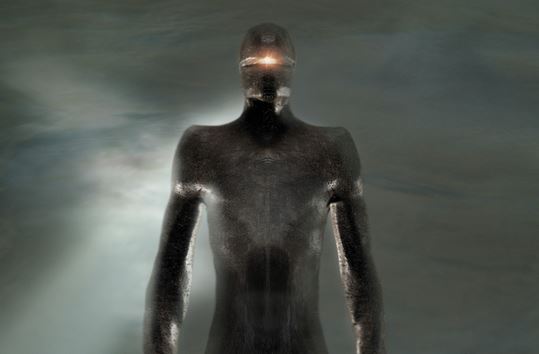SETI scientists and astronomers would like to send “come find us” messages into space, hoping that advanced aliens might pick them up and come and say “hello!” But, should this be done?
Wouldn’t we be putting ourselves at the mercy of beings much more advanced than us?
SETI (Search for Extraterrestrial Intelligence Institute) will be discussing the possibility of sending a message into space at the annual meeting of the American Association for the Advancement of Science (AAAS) next week.
As the pace of exploration into nearby worlds such as Saturn, Jupiter and Mars accelerates, as well as the entry of private companies entering space exploration, we need to address the ethical and policy implications of these endeavors.

If there were intelligent aliens out there and they meant us harm, what could we do? Not much.
Seth Shostak, Senior Astronomer and Director of the Center for SETI Research, explains the difference between Traditional SETI experiments and the Active SETI ones.
Traditional SETI experiments involve scientists eavesdropping on either flash laser pulses or radio signals from outer space. Active SETI consists of deliberately sending transmissions to nearby star systems in the hope of getting a response.
Few attempts have been made to get in touch with extraterrestrials, if there are any, over the past four decades. In 1974, a message was sent from the Arecibo radio observatory in Puerto Rico, and some others were transmitted from the Voyager probes.
At the AAAS meeting next week, speakers will present arguments for and against greater Active SETI effort.
The AAAS session is being organized by David Black and Jill Tarter, both from SETI. Presentations will be made by Seth Shostak (Institute Director of the Center for SETI Research), David Tatel (U.S. Court of Appeals), David Grinspoon (astrobiologist, senior scientist at the Planetary Science Institute), David Brin (science fiction writer), and Doug Vakoch (SETI’s Director of Interstellar Messaging).
The Active SETI session is scheduled for February 13, at 8:00 am, Room 220C, at the San Jose Convention Center, San Jose, California.

What if a space-police peacekeeping force receives our message and decides that humans pose a potential danger to life in the Universe?
In 50 years no compelling evidence of alien technologies
For the last fifty years, scientists have been trying to detect evidence of alien technologies by using radio, and later optical telescopes to look and listen.
Mr. Shostak said:
“To date, no credible evidence has been detected. It has been argued that it is also necessary to transmit actively, and a few messages have been sent.”
“Whether transmission represents a reasonable evolutionary step in our quest to understand our place in the cosmos, or a significant risk to all humanity, the topic deserves a thoughtful discussion involving as many participants as possible.”
Stephen Hawking, English theoretical physicist, cosmologist, and author, reminded us in an episode of the TV series “Into the Universe” what happened to the indigenous populations of the American continent after Christopher Columbus arrived “It didn’t turn out very well for the Native Americans.”
Under close examination, most objections to contacting aliens are pretty weak today. We cannot suddenly decide to hide under a stone after several decades of pumping electromagnetic radiation into space.
Citation: “Should We Broadcast? And What If We Find Life in the Solar System?” Seth Shostak. SETI Institute.
Video – Mr. Hawking discussing the possibility of aliens
